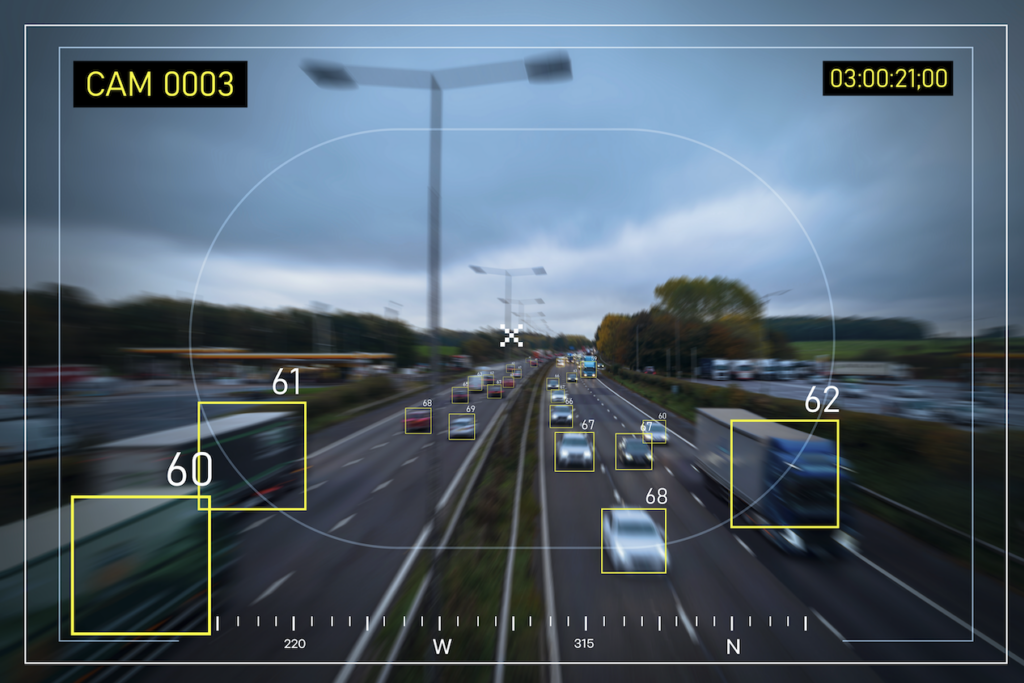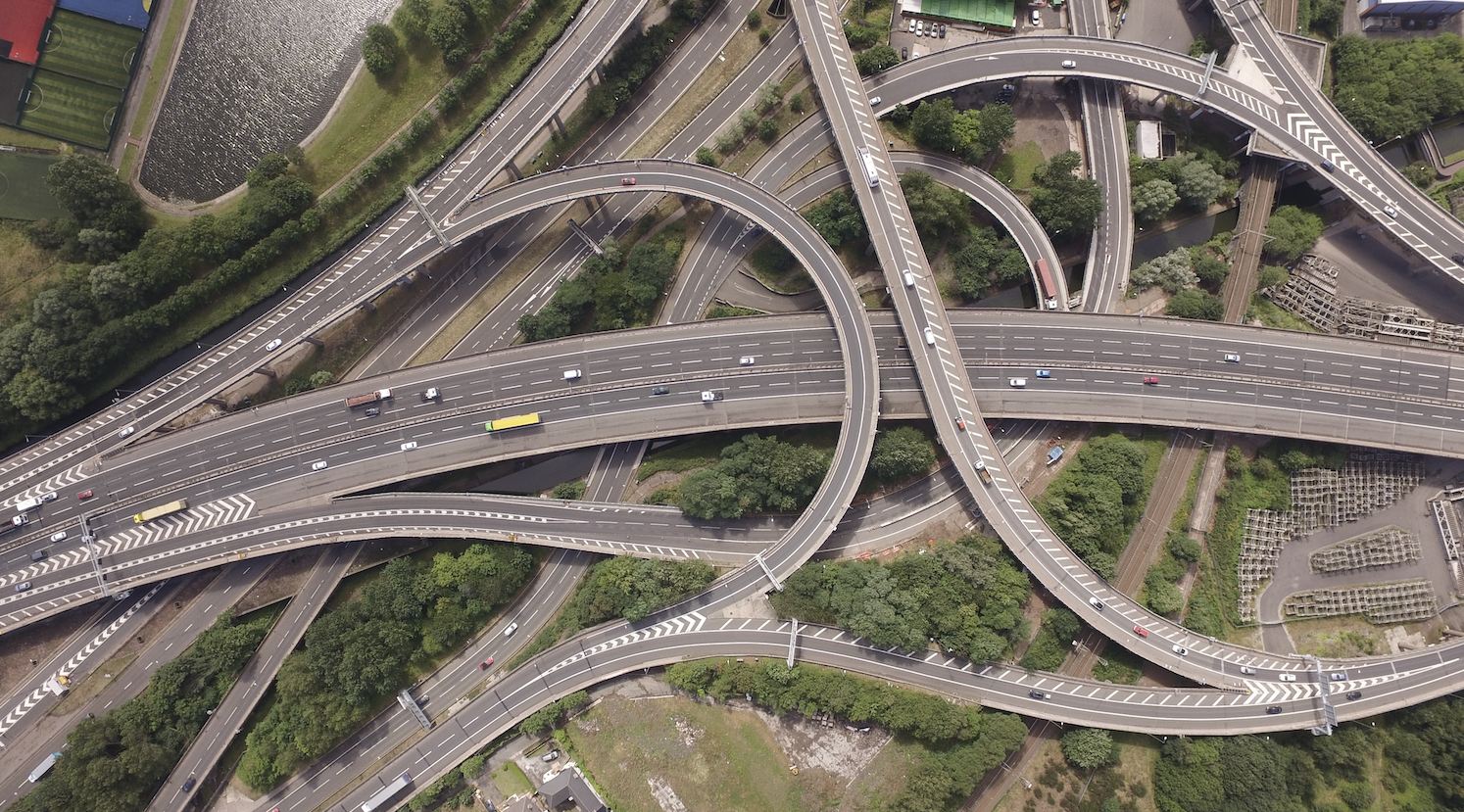Are Smart Motorways Dangerous?
Smart Motorways (ALR – All Lane Running) have had a poor reputation since their launch in 2006, with the first one introduced on the M42 in the West Midlands. They currently cover approximately 400 miles across the UK motorway network. Due to numerous concerns over safety and design, the Government has decided to remove them from future highway projects. However, with the millions already spent on constructing the ones in place, which will not be removed any time soon, it is vital that we learn to use them safely.
How do Smart Motorways Work?
A Smart Motorway will look very much like an ordinary motorway, but it will have many more cameras over every lane, and the hard shoulder will be a running lane. This turns the usual three running lanes and a hard shoulder into four running lanes. The idea behind the Smart Motorway relies on camera technology to manage traffic and variable speed limits.
Different types of Smart Motorways
All Lane Running Scheme
This particular type of Smart Motorway permanently disposes of the hard shoulder and has four running lanes. Lane 1(formally hard shoulder) is only ever closed in case of an emergency incident, in which case a red cross will appear on the screen above the lane and possibly on side screens; it is vital to move across lanes as soon as possible. Not doing so is illegal and very dangerous. The signs will also indicate the correct speed at which you should be travelling, depending on the road conditions and the incident; if there is no speed sign, it will be the regular national speed limit.
It is essential to know that all Smart Motorways have NPR (Number Plate Recognition) to enforce speeding and illegal red cross drivers. Some drivers worry that with the variable speed limit signs, they may have to apply the brakes very quickly to meet the lower limit to avoid a ticket. This can happen in as little as 10 seconds, so it is vital that drivers using such stretches of motorways are extra vigilant to overhead signs and can respond quickly and safely. Our motorway confidence courses cover critical elements of forward planning and observation, which are useful on all roads, especially motorways.
CCTV monitors all lanes, and should an incident occur, there are emergency refuge areas that drivers can pull into at the side of the carriageway. However, they tend to be 1.5 miles apart on average. The RAC is currently urging Highways England to retrofit them at closer proximities and to have radar technology fitted to spot hazardous vehicles in live lanes quicker than CCTV, as that will always have the possibility of human error.

Dynamic Hard Shoulder Schemes
The Dynamic Hard Shoulder Smart Motorway runs as a standard motorway with a hard shoulder, but at times of congestion, the hard shoulder becomes a running lane. When this happens, there is a solid white line on the stretch of the carriageway, and overhead gantries will indicate if the lane is open to traffic. If there is a red cross overhead, it is considered a regular hard shoulder and is only to be used in an emergency. If you are travelling on lane 1 and it displays a red cross, you must move lanes as it becomes the hard shoulder. Ignoring this is illegal and unsafe; cameras are aware of your movements! The Dynamic Hard Shoulder Motorway will have many overhead signs with variable speed limits; if no speed is shown, it will be the national speed limit.
What are the real danger statistics of Smart Motorways?
When Smart Motorways are mentioned, it is often in a bad light, usually after a serious collision, but realistically, any motorway collision is pretty bad due to the speeds and amount of vehicles that can be involved. The main worry is that without the safety net of a dedicated hard shoulder that can be used to pull over onto at any time, drivers fear these stretches of Smart Motorways far more. Statistics have shown that Smart Motorways have reduced personal injury accidents by nearly 50% and improved journey reliability by 22%. The added technology is a worry for many drivers. The number of signs and the fear of missing a speed limit in time make driving along stretches of Smart Motorways more stressful for many drivers. Some will avoid them altogether.
What are the rules for using Smart Motorways?
Speed
All regular rules for motorway driving apply to Smart Motorways, but it is wise to be aware that on all stretches of Smart Motorways, the cameras will pick up the individual speed of the driver, so there is much more chance of receiving a speeding fine.
Ignoring the Red X
When the Red X is displayed in the sign in the gantry above your lane or on side-of-road signs, it is vital that you move across as that lane is closed ahead. It could be the hard shoulder on a Dynamic Smart Motorway or an accident ahead on a regular Smart Motorway. The Red X is a hazard warning, and to ignore it is an automatic £100 fine.
What and where are Emergency Refuge Areas?
Unlike regular motorways with dedicated hard shoulders, Smart Motorways have Emergency Refuge Areas spread along the route at approximately 1.5-mile intervals; these safe areas are set back from the carriageway where you can pull in and wait for breakdown help. They are painted orange and are on all ‘all lane running’ motorways; if you have broken down or have been involved in a collision, it is vital to try and make it to an Emergency Refuge Area; they have the orange SOS telephone and are clearly marked with large blue signs. It is essential to put your hazard lights on immediately when you experience a problem, and once stopped, you and all passengers should leave the vehicle, stay behind the crash barriers and call Highways England from the telephone to alert them of the issue. The CCTV operators should also be aware of your location and will be alerting the traffic lanes to ensure your safety.
Using an Emergency Refuge Area is only for an emergency, not for a rest stop, checking directions, or making a phone call. It is important to know that Emergency Refuge Areas are also monitored by cameras, so a fine could be on the way if you use them for any reason other than an emergency.
Smart motorways can be dangerous, but so can all roads. It’s essential to be aware of what is expected of you on these roads, concentrate and pay specific attention to other road users, especially those who may not be concentrating themselves.
We offer a range of bespoke motorway and general driver safety courses. Please contact us for more information

